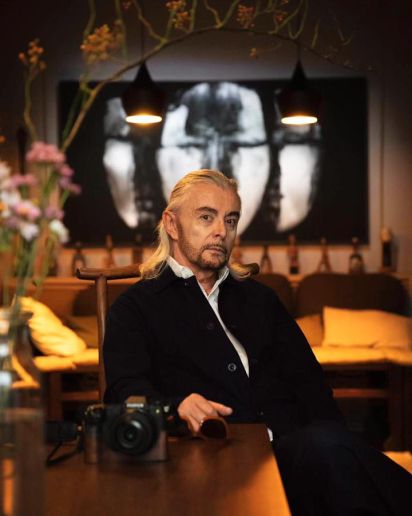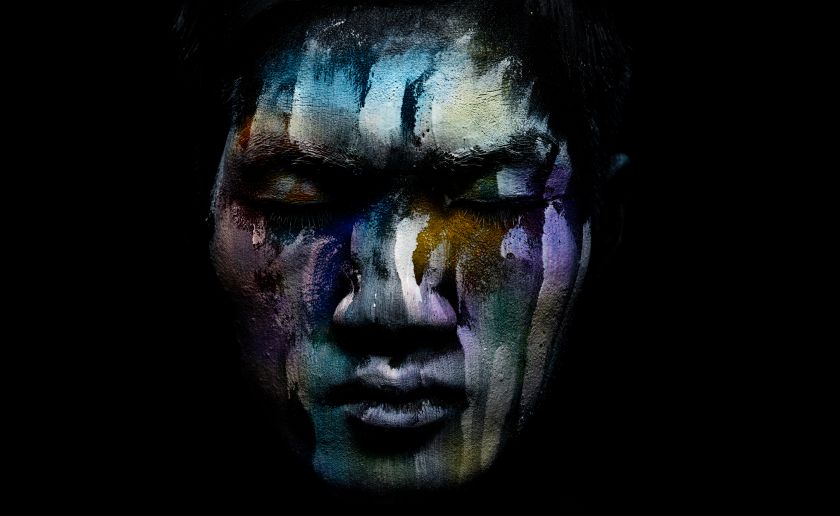Artist / Damien Dufresne

"I would like my photos to be musical scores, for them to be timeless, moving, delicate, poetic.."

There’s a really intriguing story about a boy in a small French village making his way around the globe. Could you tell us your “origin story.” Where are you from and what’s your background?
I was born in a small village in central France. It was a village with 200 inhabitants at the time.
My father was the teacher and my mother a tailor. There was only one shopkeeper, the grocer. There was a carpenter, a farrier, the others were farmers. A baker and a butcher came twice a week in their little van.
It was a blessed time and place for children. Growing up in the countryside meant freedom and fresh air. My brother and I used to spend all our free time on our bicycles riding around the countryside.
My grandparents had a farm several miles away and we used to spend our holidays there. In the summer we used to help with the harvest. The farm hired workers for this period. There were no less than 15 to 20 people at mealtimes. There was a joyful atmosphere. We enjoyed very simple pleasures. In the evening, the elders would tell stories. It was a different era.
In my parents’ village the commune had bought a television and so people from the village came to watch it at the school in the evening.
Us children were only allowed to watch it on Wednesday evenings when there was a circus show.
Your career spans continents. Tell us how you arrived in Korea and ultimately in China?
My job as a make-up artist meant that I travelled a lot and worked in New York, Milan and Seoul. But I always went back to my base in Paris. I left Paris for Shanghai five years ago. And Shanghai corresponds more to my period as a photographer.
Tell us what experiencing these different cultures has influenced you as an “image maker” or artisan?
I don’t think that my various travels have had an influence on my current work as a photographer. My photographic choices are very personal: my tastes, colours and framing, the subject of my photos, the choice of my models, comes from who I am. I think all this is acquired very early on during childhood. I believe that we carry within us the images and events of our childhood, the tastes, colours, smells, fears, joys and sorrows. Our own and those of our parents, the history of our grandparents and that all this is part of our DNA.
You began your career in make-up and hair before discovering the art of photography. Could you tell us how you discovered photography?
I started out as a hairdresser and 12 years later I started working on the haute couture catwalks in Paris; that’s when I discovered make-up, and it was a shock to me, a trigger. I was thirty years old, my career as a hairdresser seemed to be all mapped out, since I was working for Dior, YSL, Chanel, Mugler and I left everything to learn a profession that I knew nothing about, but which fascinated me.
I have worked as a make-up artist daily for thirty years. Now I only do it occasionally and I still love it.
I have worked all these years with and for fashion and beauty photographers.
And gradually I became interested in getting behind the camera and photographing myself.
My first job was as a hairdresser, my second as a make-up artist and now I am a photographer.
And ultimately today, I do all three jobs simultaneously.
Outside of photography, who is Damien?
I like my house, antiques, decoration, literature, wood fires, Mozart, sharing my life with my cats.
I am a quiet and reserved person, I like privacy.
I avoid crowds, events with hundreds of people, openings where you have to be seen.
I am more comfortable backstage than on stage.
I don’t like to promote myself or to be promoted, I always feel like an impostor, that I don’t deserve the compliments I get.
When I am told, for example, that I am an artist, I find it difficult to accept this description. My work is artistic, but the word artist seems too distant from what I really am. It’s like wearing a suit that’s too big for me.
Your work is highly emotive. What inspires you create these images?
For me, in the way I work the inspiration is the model.
Inspiration also comes during the shooting, it’s collaborative work with the model.
I sometimes try to take the model to places they haven’t been before and I also like to let them express themselves and surprise me.
It’s like a dialogue between the model and me.
You give the answer in your question. Inspiration is emotion.
How did you discover your style, or perhaps how did your style discover you?
It happened gradually. It’s like a big staircase, it’s one step after another.
I learnt photography like one learns to walk and talk. The first steps, the first words. It’s a long learning process. That’s the point of this job, to learn something new with every shot. To never stop learning. Every new shot is a new challenge and a new joy.
It’s like learning to ski, at the beginning you fall down a lot and little by little you stay upright, and eventually you learn to manage the slope, the speed and the turns.
We often see the same models featured in your work. Would you consider the models as co-creators in the work?
Yes, the model plays a very important role in my work. I choose neutral faces or faces that inspire me, but also personalities that I like.
I need the model to like the work, to confidently share their face with me.
I ask my models not to ‘pose’.
I like the shoot to be a time of discovery, a time of sharing and a time to express yourself.
I need to love the team around me. I need to feel loved.
Make-up products are tubes and bottles of colours, substances and powder. It is only when applied to the face that they become what we call make-up, and the model will give life to the character I have created on them.
Without them, make-up does not exist.
I understand your work takes a significant amount of orchestration, is there anyone you’d like to mention?
Christian WU, my co-worker, Hao XE my assistant and LIN Shawn, my favourite model, who are the people closest to me in terms of shooting the pictures.
With a career spanning decades, you must have had some incredible experiences. Are there any special shoots, or moments that you’d like to share?
The encounters with designers, actors, stylists and singers were interesting, but I don’t like to mention their names because I’m afraid of forgetting some and especially because I don’t want to use their notoriety to promote my own.
And also because it’s mostly about my career as a hairdresser and make-up artist, whereas today I am a photographer.
Travelling meant a lot to me. I had to adapt to other cultures, other ways of seeing, reacting and interpreting. It is very enriching in terms of accepting differences.
What are you working on now?
At the moment I am working on the face again, in black and white. The photo is colour, but the colours of the textures used to paint the face are black, grey and white. Full-face, profiles, very neutral poses. Often with their eyes closed. The face is not emphasized, it is used as a medium for something more abstract than before. I feel that I am moving away from portraiture and towards image.
Nothing is calculated, I am not looking to sell, I am looking to improve.
Are there any special projects planned for the coming year that you’d like to discuss?
My next work will be to project my portraits on clothes that I design.
Maybe to get a bit closer to fashion, but also to create characters. For the moment it’s only an idea.
The clothes that I designed are in the process of being made.
Any advice for people who are getting into collecting photography?
No, I don’t have a strong opinion, I just think that photography is gradually finding its place in the art world, that little by little it is getting there. The problem is the number of prints.
I dream of producing a single print for each photo. Like a painting, like a work of art, to make it sacred in a way.
And at the same time, I also like the idea of making images affordable and accessible to everyone.

